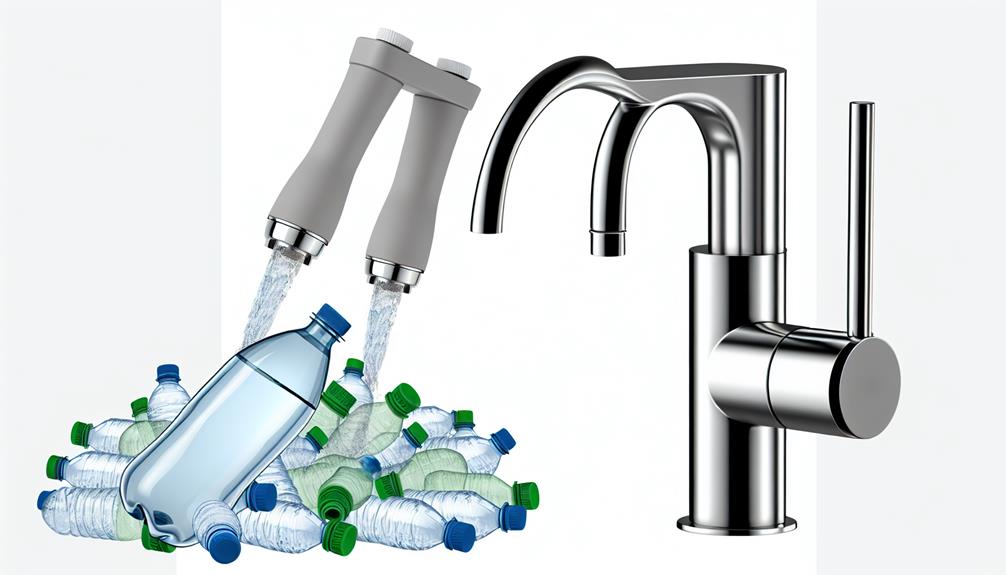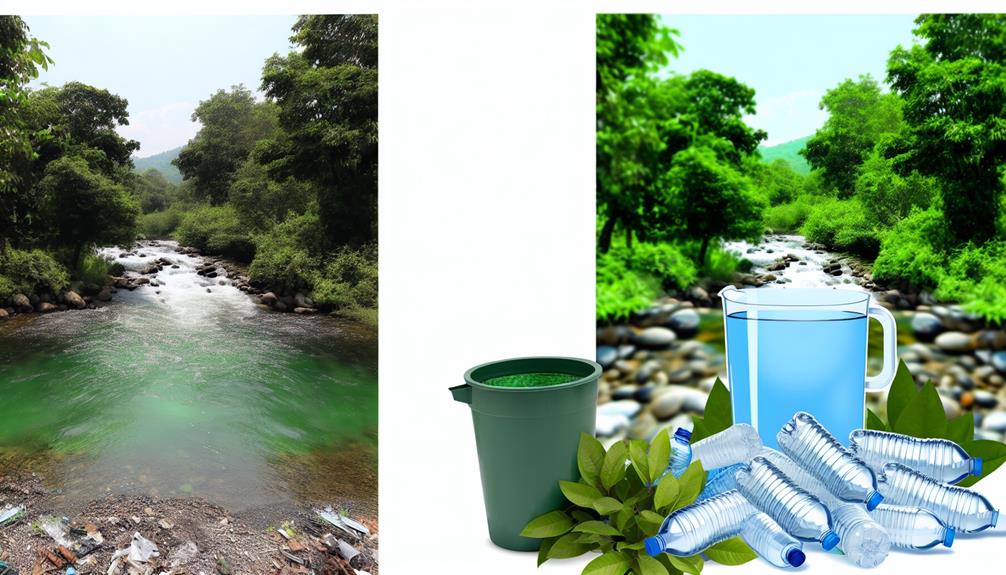Imagine you're standing by the banks of the Mississippi River, where once toxic pollutants threatened the very lifeblood of countless ecosystems. Now, thanks to advanced water purification efforts, the river teems with life, a testament to the profound impact such measures have on environmental health.
As you're aware, water isn't just a resource; it's the cornerstone of all ecosystems, and its purity is vital for the survival of myriad species, including our own. The intricate dance between water purification processes and ecosystem vitality is a delicate one, where the removal of harmful substances can mean the difference between a thriving habitat and a desolate one.
You might wonder how these systems interact on a larger scale, what challenges they face, and what future innovations could further enhance the resilience of our planet's precious waterways.
Let's explore how the often-unseen world of water purification holds the key to sustaining not just the water you drink, but the very ecosystems that cradle life as we know it.
Ecosystem Services Enhanced
Enhancing water purification processes directly bolsters ecosystem services, ensuring the provision of clean drinking water and the support of healthy agricultural practices. These ecosystem services are critical for sustainable development, as they provide essential goods and benefits derived from natural environments.
Water purification, encompassing methods such as filtration, sedimentation, and distillation, mitigates the environmental impact of pollutants and preserves ecological balance within aquatic ecosystems.
Improved water purification contributes to regulating services by purifying both water and air, influencing climate regulation, and aiding in the control of biological pests and diseases. This is pivotal in protecting aquatic life and maintaining the health of water resources, which are indispensable for conservation efforts.
Furthermore, by preserving aquatic habitats, water purification sustains cultural services that are vital for ecotourism and recreational activities, thereby enhancing the attractiveness and value of natural areas.
Moreover, supporting services like nutrient cycling, primary production, and habitat provision rely on the availability of clean water. Through the continuous improvement of water purification techniques, ecosystem services are enhanced, promoting the restoration of biodiversity and fostering the resilience of ecosystems against environmental pressures.
Water Pollution Threats Mitigated
By tackling water pollution at its source, water filtration systems play a crucial role in safeguarding aquatic biodiversity and ensuring the integrity of ecosystems. These water treatment technologies are pivotal in removing contaminants that would otherwise disrupt the delicate balance of aquatic habitats. Filtration systems, including reverse osmosis and activated carbon filters, systematically remove impurities and eliminate harmful substances from water bodies, enhancing water quality and mitigating water pollution threats.
Reverse osmosis employs a semipermeable membrane to eradicate dissolved inorganic solids, while activated carbon effectively adsorbs organic compounds and chlorine. Together, these filtration methods not only ensure the health of marine and freshwater species but also support reproductive success and restore food chain dynamics by maintaining clean environments.
Advanced filtration techniques are essential in conserving water resources. By treating and repurposing existing water sources, they minimize the need to extract new freshwater, thus preserving ecosystems. Moreover, effective water filters reduce reliance on single-use plastic water bottles, cutting down plastic waste and protecting environments for future generations. The strategic application of these systems contributes to the broader goal of ecosystem preservation by consistently addressing water pollution threats at their roots.
Biodiversity Preservation Strategies
To preserve biodiversity effectively, strategies such as establishing protected areas and promoting sustainable land use are frequently adopted. These approaches aim to mitigate negative effects on various ecosystems and contribute to the preservation of natural resources.
Protected areas serve as sanctuaries for terrestrial and marine life, reducing habitat destruction and fragmentation, which are major threats to species diversity.
Sustainable land use practices encompass a range of activities, including support for reforestation and afforestation initiatives. These efforts not only enhance biodiversity and ecosystem resilience but also bolster natural filtration systems that maintain clean drinking water sources.
Community-based conservation programs engage local populations, empowering them to take stewardship of their environment, thus ensuring a sustainable solution to biodiversity loss.
Furthermore, fostering partnerships among stakeholders is crucial for a coordinated response to conservation challenges. Collaboration leads to more effective biodiversity preservation strategies that can address issues such as water scarcity and environmental impact comprehensively.
Natural Resource Conservation Methods
Building on the foundation of biodiversity preservation, natural resource conservation methods extend these efforts to ensure sustainable use of water, soil, and biological resources. Conserving water is a critical aspect of these methods, aimed at reducing water consumption and energy consumption associated with treatment and distribution. By implementing natural filtration systems, such as wetlands and riparian buffers, you not only protect water bodies from pollutants but also enhance the environmental impact of conservation practices.
Sustainable solutions for natural resource conservation emphasize the reduction of water and energy consumption. These include adopting efficient irrigation techniques, utilizing renewable energy sources, and promoting sustainable agriculture practices that minimize soil erosion and enhance soil health. Additionally, these methods focus on preserving water sources through the protection of watersheds and the maintenance of wildlife habitats.
To reduce plastic waste, which significantly contaminates aquatic ecosystems, it's essential to support policies and initiatives that encourage recycling and the reduction of single-use plastics. Community involvement in conservation education further solidifies the application of natural resource conservation methods, ensuring that the collective effort translates into impactful change.
In essence, these integrated conservation strategies aim to secure the long-term health and availability of natural resources, balancing ecological, economic, and social needs.
Purification Technology Advancements
As we delve into the realm of purification technology advancements, it's evident that recent innovations have revolutionized the efficiency and effectiveness of water treatment systems. The strides made in water purification aren't only ensuring a consistent supply of safe drinking water but are also pivotal in reducing the environmental impact of such processes. These advanced filtration technologies contribute significantly to global conservation efforts, aligning with sustainable development goals.
Here's a snapshot of the key advancements:
- Reverse Osmosis: This process uses a semipermeable membrane to remove ions, molecules, and larger particles from contaminated water, delivering clean water that's safe for ecosystem health.
- UV Filtration: Ultraviolet light is employed to disinfect water by eliminating harmful pathogens without the use of chemicals, ensuring the integrity of aquatic life.
- Nanofiltration & Membrane Distillation: These advanced filtration technologies provide superior water recovery rates while maintaining lower energy consumption, presenting a breakthrough in sustainable water filters.
- Energy-Efficient Systems: Modern systems play a crucial role in minimizing power usage, thereby reducing the carbon footprint associated with water purification.
Through these advancements, access to clean water is becoming more attainable, safeguarding both human health and the environment.

